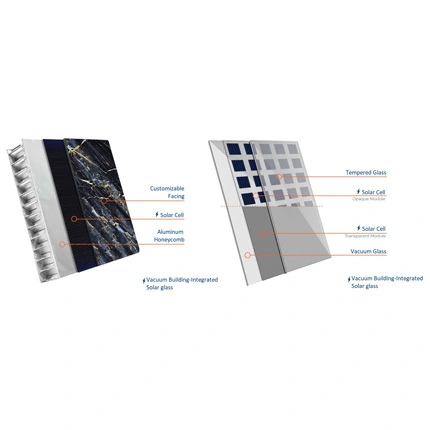
When exploring energy-efficient glass solutions, both insulated glass and vacuum glass (often referred to as vacuglass) emerge as prominent options. However, they differ markedly in design, performance, and application. Grasping these differences is essential for making an informed choice that aligns with your specific requirements.
Insulated glass, also known as double-glazed or triple-glazed glass, has been a cornerstone in the construction industry for many years. It comprises two or three layers of glass separated by a layer of air or inert gas (such as argon or krypton). The space between the glass layers is sealed to prevent air exchange, thereby reducing heat transfer.
Key Characteristics of Insulated Glass:
Thermal Performance: Insulated glass offers commendable thermal insulation by minimizing heat conduction through the air or gas layer. The U-value (a measure of heat transfer) for double-glazed units typically ranges from 1.8 to 3.0 W/m²K, while triple-glazed units can achieve U-values as low as 0.8 to 1.0 W/m²K.
Thickness and Weight: Insulated glass units are relatively thick and heavy. Double-glazed windows are generally around 24mm thick, whereas triple-glazed windows can be up to 40mm or more. This thickness can pose limitations in certain architectural designs.
Sound Insulation: Insulated glass also provides some acoustic benefits by reducing noise transmission. However, its sound insulation capabilities are generally less effective compared to specialized acoustic glass solutions.
Durability: The performance of wholesale insulated glass can diminish over time, especially if the seal between the layers is compromised. This can lead to condensation between the panes and a reduction in insulation efficiency.
Vacuglass signifies a major advancement in glass technology. Instead of using air or gas layers, vacuglass employs a vacuum-sealed space between two layers of glass. This unique design eliminates heat transfer through conduction and convection, resulting in superior thermal performance.
Key Characteristics of Vacuglass:
Superior Thermal Performance: Vacuglass achieves exceptional insulation with U-values as low as 0.4 to 0.6 W/m²K. This means it can reduce heat loss by up to 50% compared to traditional double-glazed windows and up to 20% compared to triple-glazed windows.
Slim and Lightweight: One of the most notable advantages of vacuglass is its slim profile. Vacuglass units are typically only 6mm to 12mm thick, making them much thinner and lighter than traditional insulated glass. This allows for greater design flexibility and easier installation.
Enhanced Acoustic Performance: The vacuum layer in vacuglass also acts as an effective sound barrier, providing superior acoustic insulation. It can significantly reduce external noise, making it ideal for urban environments and applications where sound reduction is crucial.
Longevity and Durability: The vacuum seal in vacuglass is highly durable and maintains its performance over time. Unlike insulated glass, which can degrade if the seal is compromised, vacuglass offers consistent insulation for decades.
Aesthetic Appeal: The thin profile of vacuglass allows for a more minimalist and modern design. It can seamlessly integrate into various architectural styles without compromising on performance or aesthetics.
Both insulated glass and vacuglass have their own strengths and are suitable for different applications:
Insulated Glass: Ideal for residential and commercial projects where budget constraints are a consideration. It is also suitable for retrofitting older buildings to improve energy efficiency.
Vacuglass: Perfect for modern architectural projects that prioritize high thermal and acoustic performance, minimalistic design, and long-term durability. It is particularly well-suited for high-end residential, commercial buildings, greenhouses, and solar applications.
While insulated glass has been a dependable choice for many years, vacuglass offers a significant leap in performance and design flexibility. With its superior thermal insulation, slim profile, enhanced acoustic performance, and long-term durability, vacuglass is setting a new standard in energy-efficient glass solutions.
At evergreen glass, we are at the forefront of vacuglass technology, providing high-quality vacuum insulated glass solutions tailored to your specific needs. Our commitment to innovation and customer service ensures that you receive the best possible products and support. Contact us today to discover how vacuglass can transform your next project and elevate your building’s performance to new heights.